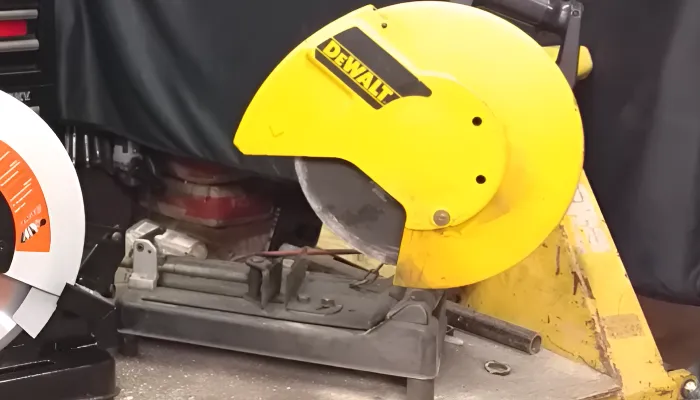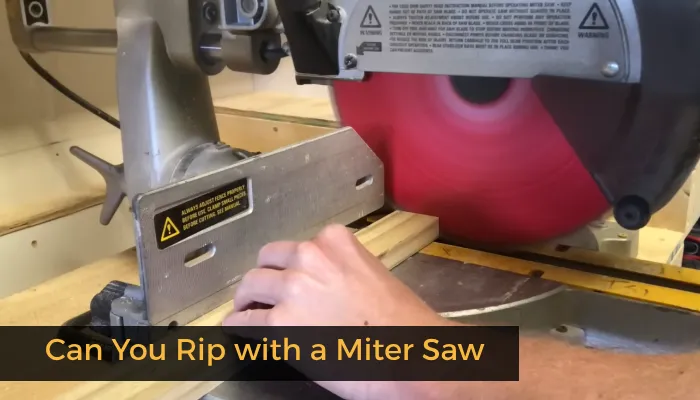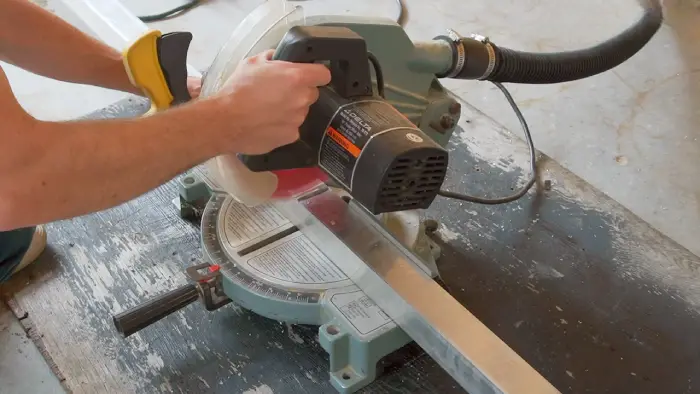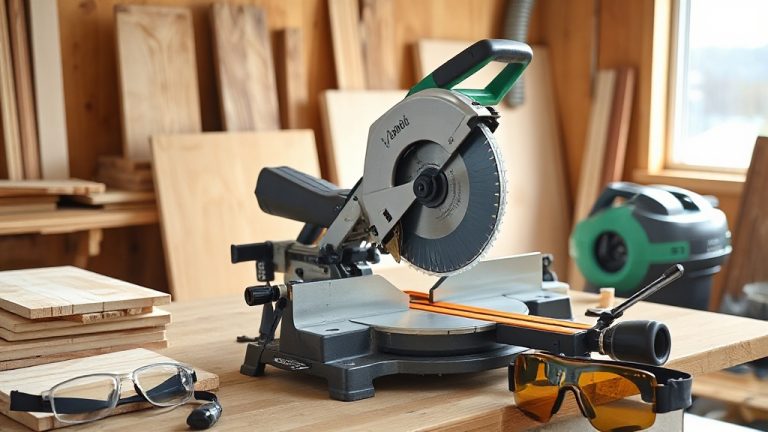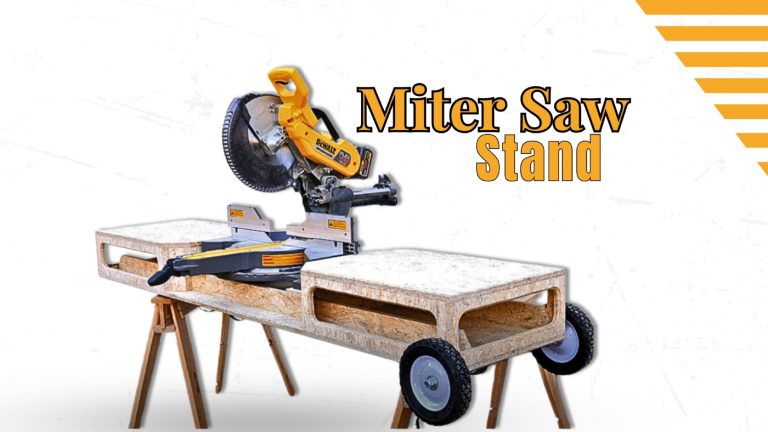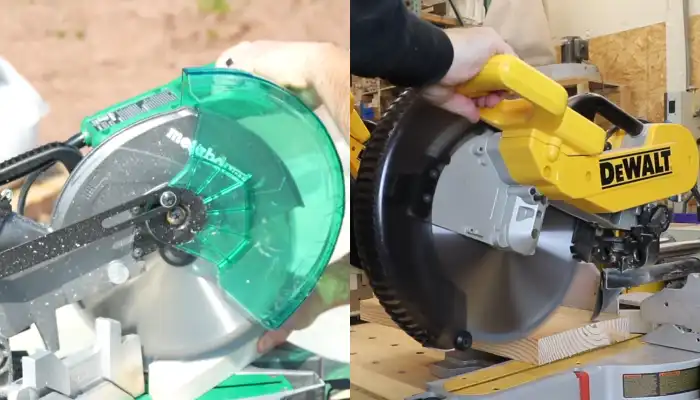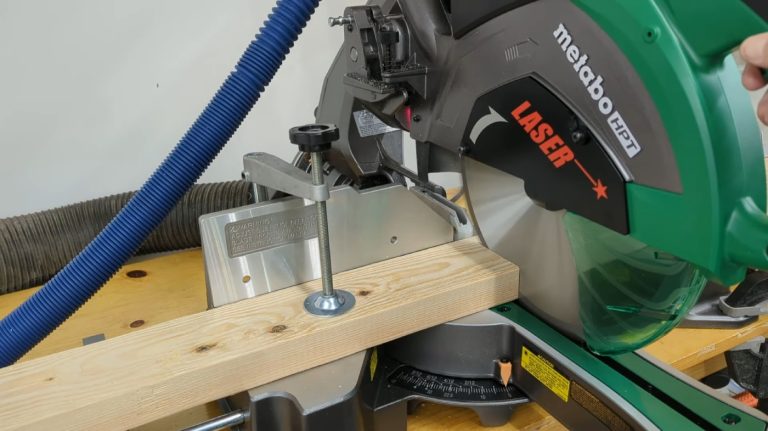Can You Put an Abrasive Blade on a Miter Saw: 7 Hazards
Miter saws are a staple in many workshops, renowned for their precision woodcutting abilities. But have you ever wondered if you can put an abrasive cutting blade on a miter saw? Well, you can’t put an abrasive saw blade on a miter saw. But why?
Abrasive blades are typically used for cutting through hard materials like metal or concrete. When used with a miter saw, abrasive blades can cause the saw to overheat, potentially damaging the arbor and other components.
Moreover, the high-speed rotation of the abrasive blade can lead to the blade breaking apart, posing a serious safety hazard. This article will explore the hazards of putting an abrasive blade on your miter saw and what not to do with it.
Can You Put an Abrasive Blade on a Miter Saw: Know the Possible 7 Hazards
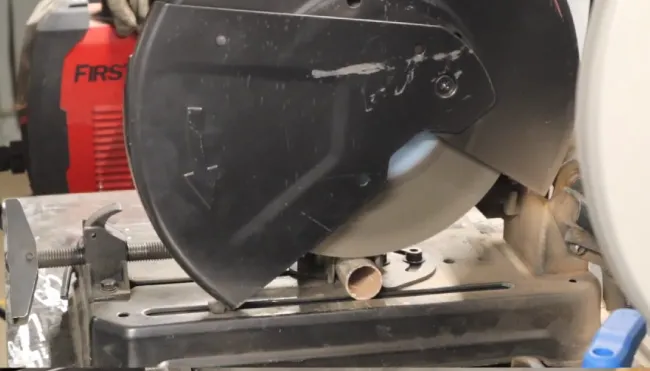
Attempting to repurpose a miter saw by installing an abrasive blade can lead to many problems and potential dangers, such as:
- Motor damage and overloading
- Friction and heat generation
- Potential for plastic component damage
- Safety concerns
- Warping or melting of components
- Reduced lifespan of the miter saw
- Grit and debris buildup
Let’s discuss these in detail:
1. Motor Damage and Overloading
Abrasive blades engineered for tougher materials like metal require a lower RPM range. When an abrasive saw blade is used on a miter saw operating at its typical RPM range, it places excessive strain on the motor.
This disparity can place undue strain on the saw’s motor, potentially leading to bearing damage and even motor malfunction. Miter saws typically operate between 4000 and 5400 RPMs, while abrasive blades are more suited for RPMs ranging from 3200 to 3600.
2. Friction and Heat Generation
Using an abrasive disk on a miter saw operating at its usual RPM range can lead to excessive friction and heat generation. This is due to the higher operating speeds of miter saws, which are incompatible with abrasive blades.
When these two elements are combined, the blade and the material being cut can become red-hot, posing a significant safety risk. Also, sparks and debris generated during this process can cause the plastic components of the saw to warp, melt, or even catch fire.
The excessive heat and strain can also damage the tool’s bearings over time, affecting its overall functionality and accuracy. Therefore, avoid using abrasive blades on a miter saw to prevent these issues and ensure a safe working environment.
3. Potential for Plastic Component Damage
As the abrasive wheel cuts through materials, it produces significant heat, which can transfer to the nearby plastic components. This heat can exceed the melting point of the plastic, causing it to deform, warp, or even melt completely.
Miter saws often incorporate plastic components to reduce weight and increase portability. However, when using an abrasive blade, these plastic parts are not designed to withstand the extreme temperatures of friction.
Once the plastic parts are damaged, the structural integrity of the miter saw is compromised, potentially rendering it unusable. To prevent damage and ensure the longevity of your miter saw, use the right blades and don’t use abrasive blades.
4. Safety Concerns
When working with a miter saw, prioritize safety due to the potential risks and hazards. Using an abrasive blade with a miter saw introduces a whole new level of safety concerns.
The sparks and debris generated during cutting pose a significant risk to you, the operator, and the surrounding area. These flying particles can cause eye injuries or ignite flammable wood materials nearby, leading to accidents or fires.
5. Warping or Melting of Components
To prevent potential damage to the plastic components of your miter saw, be aware of the intense heat generated by the friction between the blade and the material. The heat generated can reach extremely high levels when an abrasive blade is used on a miter saw.
This intense heat can cause the plastic parts to warp or even melt. The blade guard, designed to protect you from the spinning blade, can become misaligned or compromised, leaving you at risk of injury. Also, the heat can affect the saw’s table, leading to inaccuracies in your cuts.
6. Reduced Lifespan of the Miter Saw
An abrasive blade on your miter saw can significantly decrease lifespan due to increased stress and wear on the components. The abrasive nature of the blade causes the motor to work harder, putting additional strain on its internal mechanisms.
This continuous stress can deteriorate important parts, such as the bearings and gears, reducing overall performance and functionality. Moreover, heightened friction generated by the abrasive blade may result in increased temperatures within the saw, resulting in more rapid wear and tear.
7. Grit and Debris Buildup
When using an abrasive saw blade on a miter saw, the cutting process generates significant grit and debris. Over time, this debris can build up in the saw’s moving parts, such as the pivot and slide mechanisms, causing them to become clogged and less efficient.
Regularly inspect and clean these areas to maintain optimal performance and prevent potential damage. Use a brush or compressed air to remove any loose debris, and consider using a lubricant to keep the moving parts well-maintained.
What not to do with a miter saw?
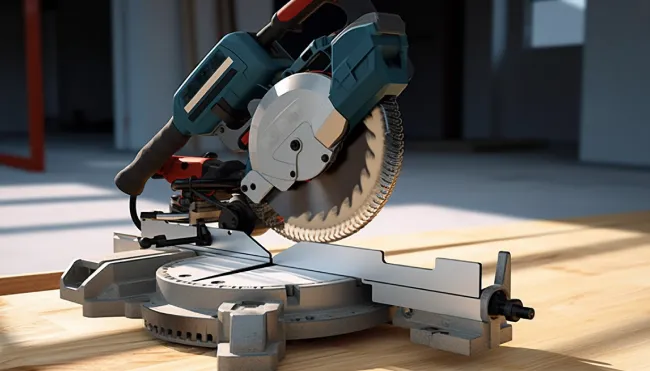
When working with a miter saw, there are certain precautions you should always take to ensure your safety and the efficiency of your work.
1. Never Operate the Saw on the Ground
Make sure you don’t operate the saw on the ground, as it can be extremely dangerous. A miter saw is designed for a stable surface, such as a workbench or a sturdy table. Operating it on the ground can lead to instability and a higher risk of accidents.
When the saw is on the ground, it lacks the support and stability it needs to function properly. This can result in inaccurate cuts, blade binding, and potential kickbacks. Also, the risk of injury is heightened as the operator has less control over the saw and the workpiece.
2. Don’t Cut Anything Smaller than 20 cm
When using a miter saw, know the minimum material size you can safely cut. You should never attempt to cut anything smaller than 20 cm in length. Cutting materials smaller than this minimum size can make the material unstable or fall into the blade, causing serious injury.
3. Avoid Cutting Stock with Loose Knots or Splits
When using a miter saw, prioritize safety by selecting stock free of defects such as loose knots or splits.
Loose knots can cause the wood to separate during cutting, leading to unpredictable and dangerous movements. Splits in the wood can also compromise the material’s structural integrity, making it more prone to splintering or breaking apart.
Working with stock in good condition and free from defects is essential to ensure clean and accurate cuts. Inspect the wood carefully before cutting to avoid potential hazards or accidents.
What’s the biggest disadvantage of using an abrasive blade in a miter saw?
The main disadvantage of using an abrasive blade with a miter saw is that it can overload the motor and lead to motor failure. Using an abrasive blade to cut through tough materials like metal, friction, and resistance significantly strain the motor.
The motor of a miter saw is designed to handle the load of a regular saw blade, typically used for cutting wood. However, the abrasive blade requires more power to cut through harder materials, causing the motor to work harder and potentially overheat.
Over time, this can lead to motor failure, requiring costly repairs or even the need for a new saw altogether. Therefore, use the appropriate saw blade for the type of material you are cutting to avoid putting excessive strain on the motor.
What are abrasive saw blades used for?
Abrasive saw blades are commonly used to cut concrete, metal, and masonry. These blades are designed with abrasive particles embedded in a resin matrix, allowing them to grind and cut through tough materials effectively.
The abrasive particles on the blade’s surface create friction and heat, which helps to remove material and make precise cuts. These blades are available in various sizes and types to suit different wood cutting tasks.
Blades with a high concentration of abrasive particles are recommended for cutting metal, while blades with a lower concentration are preferred for cutting concrete and masonry. Also, choosing the right blade for the specific cut material is important to ensure efficient and accurate cutting.
Using the Proper Tool for the Intended Task
Attempting to retrofit a miter saw with an abrasive blade designed for other materials is a recipe for disaster. The problems associated with this practice are numerous and significant, from motor strain to safety hazards.
However, abrasive blades aren’t ideal for miter saws because of the increased risk of kickback and loss of control. Abrasive saw blades are specifically designed for different applications, such as cutting through metal, concrete, or masonry.
To ensure your safety and the longevity of your tools, abide by their intended usage. Stick to woodworking blades for miter saws and consider alternative tools for abrasive cutting tasks.

